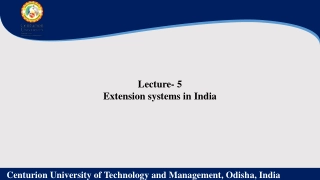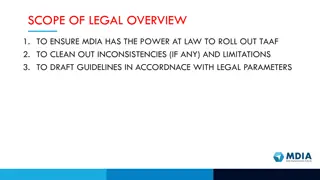
FinFET Technology and Its Applications
Dive into the world of FinFET technology, introduced by Chenming Hu in 1999, which revolutionized semiconductor design with its thin body structure and improved gate control. Learn about the double gate structure, modern 3D implementations, and how the FinFET differs from traditional MOS devices. Explore how the device's drive current can be boosted by increasing the channel width and why the effective width of the device is quantized.
Download Presentation

Please find below an Image/Link to download the presentation.
The content on the website is provided AS IS for your information and personal use only. It may not be sold, licensed, or shared on other websites without obtaining consent from the author. If you encounter any issues during the download, it is possible that the publisher has removed the file from their server.
You are allowed to download the files provided on this website for personal or commercial use, subject to the condition that they are used lawfully. All files are the property of their respective owners.
The content on the website is provided AS IS for your information and personal use only. It may not be sold, licensed, or shared on other websites without obtaining consent from the author.
E N D
Presentation Transcript
FinFET Technology https://www.design-reuse.com /articles/41330/cmos- soi-finfet-technology-review-paper.html
Introduction Former TSMC CTO and Berkeley professor Chenming Hu and his team presented the concept of FinFET in 1999 and UTB-SOI (FD SOI) in 2000. The main principle behind both the structures is a thin body, so the gate capacitance is closer to whole channel. The body is very thin, around 10nm or less. So, there is no leakage path which is far from the gate. The gate can effectively control the leakage.
Double Gate Structure The basic structure of FinFET which they proposed would be a channel controlled by more than one side of channel.
Tri-gate transistor. FinFET can be implemented either on bulk silicon or SOI wafer. This FinFET structure consists of thin (vertical) fin of silicon body on a substrate. The gate is wrapped around the channel providing excellent control from three sides of the channel. This structure is called the FinFET because its Si body resembles the back fin of a fish.
In bulk-MOS (planner MOS), the channel is horizontal. While in FinFET channel, it is vertical. So for FinFET, the height of the channel (Fin) determines the width of the device. The perfect width of the channel is given by Equation. Width of Channel = 2 X Fin Height + Fin Width
The drive current of the FinFET can be increased by increasing the width of the channel i.e. by increasing the height of the Fin. We can also increase the device drive current by constructing parallel connected together as shown in the Figure. multiple fins
It implies that for a FinFET, the arbitrary channel width is not possible, since it is always a multiple of fin height. So, effective width of the device becomes quantized. While in planner devices, there is the freedom to choose the device s drive strength by varying channel width.
In conventional MOS, a doping is inserted into the channel, reducing the various SCEs and ensuring high Vth. While in FinFET, the gate structure is wrapped around the channel and the body is thin, providing better SCEs, becomes optional. It implies that FinFET suffers less from dopant-induced variations. Low channel doping also ensures better mobility of the carriers inside the channel. Hence, higher performance. Both FinFET and SOI introduced Body Thickness as a new scaling parameter. so channel doping technologies have
Advantage of FinFET FinFET advantages over bulk CMOS, such as Higher drive current for a given transistor footprint, hence higher speed, lower leakage, hence lower power consumption. No random dopant fluctuation, hence better mobility and scaling of the transistor beyond 28nm. technology provides numerous






















